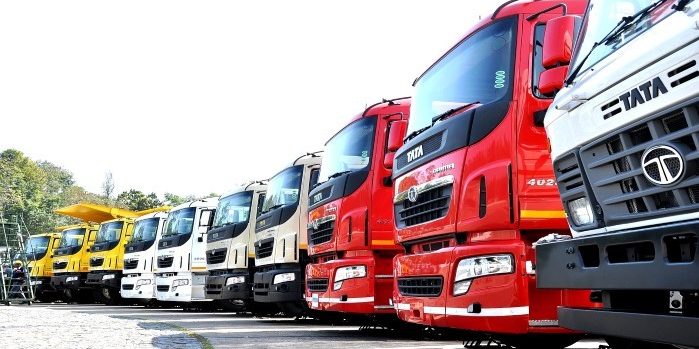
Over the last few years industrial demand has been quite sluggish as a result of the global economic crisis resulting in a more stagnant
trend among truck and trailer application builders. Despite this, there had been quite a strong urge among truck and trailer application builders towards standardization of their products and components and the use of alternate materials as substitutes to reduce weight and reliability.

The on-chassis and after-chassis application Industry – the Indian application industry involved in building truck body, tipper and trailer – has currently a revenue earning potential of Rs. 150 billion with a projected growth of 6-7 per cent CAGR over the next five years. The change of government at the Centre brought in positive sentiment. The optimism over the future Indian application industry’s growth was primarily triggered by the announcement of new policies, enforcement of regulations, the Motor Vehicle Act to implement truck body and trailer body codes, opening up of the banned coal mines, etc.
Today on-chassis and after-chassis applications in India are quite wide and complex, spread across diverse geographies specific to each cluster and very challenging to address the unique needs of the customers. The Indian market witnesses technology innovations in each of the segments listed.
Vehicle body designs are majorly driven by the industrial in-bound and out-bound cargo movements. Almost 60 per cent of the vehicles are built with flats or with side boards to adjust to the challenging cargo movements. This is pushing the application builders to build suitable covering solutions for tippers, open trucks and trailers in the form of curtains that provide them unique benefits in terms of avoiding cargo pilferage, possible branding benefits and the need to keep the environment clean.

Though there is no clear mandate in place on cargo covering, the Government is sure to come out with some sort of regulation sooner than later.
Global technologies adopted by the logistics companies setting shop in India are pushing towards palletized transport and making their cargo mobile to avoid transit delays in loading and unloading. This trend is a clear signal for applications builders to progress towards cargo containerization.
A cold chain boom is going to be the next big initiative from the Government in upgrading the Indian food processing industry, particularly refrigerated container building. However, the huge technology gap may prove a major deterrent.
The bulker is now an established model in India used for transportation of fly ash and cement. Here the end-users have the benefits in terms of savings in pilferage and easier discharge directly onto the silos for further processing. This trend would soon spread into other products like foodgrains, carbon black, minerals and other granular materials. This would totally avoid the traditional model of transportation of goods via gunny bags.

In the area of tipper bodies, there is the welcoming trend among customers to migrate towards tip trailers for long haul movements, considering overall cost economics. Tipper and tip trailer bodies are now getting more innovative in terms of their shape, method of tipping, internal quoting and adoption of alternate materials to improve productivity, reliability and durability of the products for end-users.

Liquid movements specific to explosive cargo are strictly sensitized and we see emergence of approvals for higher capacity tanks and willingness from the explosive control department to use alternate materials like stainless steel and aluminium substituting steel for possible reduction in thickness impacting load carrying capacities. A big drive by the regulatory authorities towards safety and reliability of components, manufacturing process, etc., can also be expected. In the non-explosive tanker segment, overloading still remains a menace.

Special vehicles which are oversized have been quite unregulated. Now new regulations are in offing to check over dimension and overloading. We anticipate having a clear transparent and effective process in place. In terms of the innovations we see the drive arising from the industries in use of the specialized equipment’s to transport the Oversized cargo more reliable and effectively. However the cost of importing of these goods is quite high in turn impacting the cost of transportation. This would be the new area for the niche application builders specialized in this segment to look for product re-engineering opportunities to suit Indian market conditions.
The Indian cabin industry has been dwelling with a delay in implementation of the cabin codes. While the truck driver’s cabin will have to meet certain standards like adequate seating space and controlled cabin temperatures, compliance to crash tests, mounting instructions and safety norms will see a total change in the outlook of the cabin industry which is also linked to the future of micro and small scale Industries in the country. The new Motor Vehicle Act is expected to permit movement of only vehicles with cabin which will push the OEMs to sell vehicles fitted with a cabin.

Once the bus body code is implemented this year, the government plans to implement the AIS 93 (Automotive Indian Standards) code, ensuring Code of Practice for Construction and Approval of Truck Cabs & Truck Bodies.
It was agreed last year by the CMVR (Central Motor Vehicle Regulation) Technical Standing Committee to separate Trailer regulations under Trailer Code, as the segment requires additional amendments and special focus. One of the main concerns envisaged would be the resources required for accrediting the body builders and approving and validating the products.

The industry is expected to witness a major transformation in the coming years which is also encouraging for international players to set shop and formulate joint ventures with local partners with a view of using India as a hub for low cost quality manufacturing at part with international standards. At RACE we expect there would be a major consolidation, structured Industrialisation in this sector of truck and trailer applications, adding additional tax revenue to the government. Further we hope that the government will provide the necessary focus required to implemented new initiatives and subsidies to groom this industry.
By Rajesh Khanna, COO, RACE Innovations Pvt. Ltd





